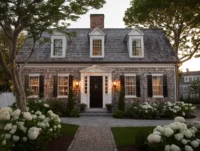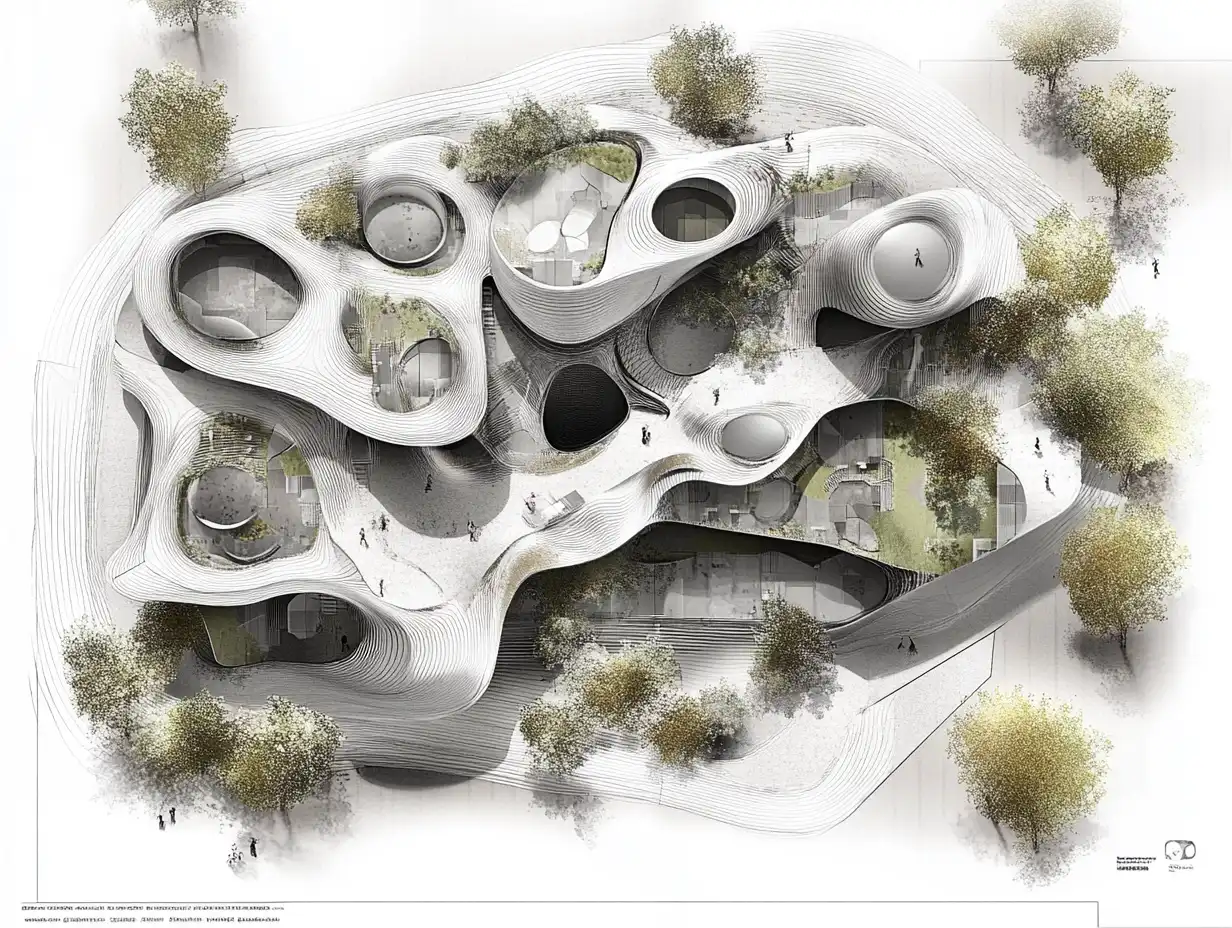Imagine the power of a simple sketch! In the world of architecture, it’s more than just lines on paper. It’s a dynamic tool that helps us communicate, explore, and fine-tune our design ideas. As we delve into various sketching techniques, we’ll reveal how this fundamental skill can enhance your architectural concept design process.
Freehand sketching, the backbone of architectural concept design, liberates us from the constraints of rulers and precise measurements. It’s a playground for our ideas, enabling us to experiment freely. But our journey doesn’t stop here. We’ll also explore how to create distinctive architectural elements, push boundaries, and think outside the box.
In today’s environmentally conscious world, sustainability isn’t just a buzzword, it’s a necessity. We’ll touch upon how integrating sustainable elements into your architecture can contribute to a greener future. So, let’s embark on this journey to bring your architectural ideas to life.

What is an Architectural Concept?
Architectural concepts reflect the underlying ideas and principles critical to design. They guide architects in creating functional, aesthetically pleasing, and significant spaces that cater to user needs and the surrounding environment.
Importance of Architectural Concepts
Architectural concepts form the backbone of every design project, acting as the guiding light for architects. These concepts provide a clear framework, steer decision-making, and help formulate the design narrative. A working understanding of concepts is instrumental in capturing the essence of a proposed structure.
Notably, architectural concepts may change throughout a project; modifications may arise as one grapples better with the design elements and site specifics. An architectural design project may encompass various types of architectural concepts during its development process. It’s worth noting that the core idea for a project isn’t typically a firm concept at the start of deliberations. An ongoing development and refinement process brings the architectural concept into sharper focus.
These concepts are often the culmination of detailed problem analysis or prompted by one. They can take on a broader, overarching role and can continually develop as the project progresses.
Understanding the site context is crucial when generating the architectural concept, considering the existing architectural styles in the area. This gives rise to creative opportunities for concept development, building upon the evolution of the surrounding architectural landscape. Comprehensive research and a thorough understanding of existing structures aid in creating concepts deeply snuggled in the progression of neighboring constructions.
Architectural concepts serve a mission-critical role in the grand scheme of the architectural design process, delivering an intersection of form and function beautifully blended. It is these very concepts that help render meaningful spaces while also responding eloquently to user needs and the enveloping environment.
Developing Architectural Concepts
Navigating the process of conceptualizing architecture involves a careful blend of creative fluidity and discipline.
Sketching Out Ideas for Architectural Concepts
To stimulate the generation of architectural concepts, architect sketches serve as a highly effective tool. These fast, hand-drawn figures initiate a creative dialogue that allows exploration, communication, and refinement of ideas. Be it abstract forms or the deliberate lines of a building silhouette, freehand sketches spark intuitive understanding. Frank Gehry, an iconic architect, leveraged the power of sketching to bring his imaginative structures into reality. Hence, integrating sketching into your routine can certainly enrich your architectural concept development process.

Approaching Design Concepts from Different Angles
As architects, we treasure the belief that there are manifold ways to interpret a design situation. A singular issue can be viewed from a myriad of perspectives, implying a multitude of plausible solutions. The angle of our approach can change the entire concept of the design. It’s pivotal to remember that an architectural concept can constantly evolve. As Edward T. White hinted in his book ‘Concept Sourcebook,’ concepts can develop either as a derivative from a problem analysis or as an initiator.
By considering a concept from different angles, we’re providing room for an extensive exploration that can steer us towards a compelling conceptual pathway.
Breaking Down the Concept into Smaller Parts for Better Understanding
The architectural concept is an abstraction of complicated thought. To comprehend and implement it astutely, it’s beneficial to break down the concept into smaller, easily digestible parts. This microanalysis helps identify the essential elements of the concept, such as spatial arrangement and circulation – a crucial concept in galleries and museums, where visitor flow and interaction are paramount.
CF Møller Architects, a renowned architectural firm, stands as an example, exhibiting extensive proficiency in considering these elements in their designs. Applying this method of deconstruction equips architects with a clear structure and guidance for the better assimilation of intricate architectural concepts.

Tips to Generate Architecture Concepts
Without question, developing compelling architectural concepts plays an integral role in creating unique and functional designs. Here are several strategies and guidelines to consider when embarking upon this process.
Starting with a Clear Vision
Initiating your design journey, it’s crucial to have a well-defined vision. Lay out the project’s purpose, goals, and objectives clearly at the outset, STRIKETHROUGH: such as whether a client desires a unique bungalow or a cutting-edge office building. This considered vision not only anchors the design process, but also aids in conveying the required message seamlessly to the rest of the involved parties.
Importance of Sustainability in Architecture
In an era dominated by environmental consciousness, sustainable architecture occupies a crucial place. Incorporate eco-friendly practices into your design concepts to align with this prevailing trend. For instance, use energy-efficient materials and passive design techniques, or consider renewable energy sources. These sustainable design principles not only reduce environmental impact but also enhance the building’s functionality and appeal.

Prioritizing Functionality in Architecture
While visual appeal remains important, prioritizing functionality proves equally vital in architectural design. Spatial arrangement and circulation, two interconnected design aspects, significantly influence how users navigate and interact within the space. For instance, strategic site access, thoughtful placement of entrances and exits, and logical horizontal and vertical pathways within the structure contribute to its overall functionality.
Playing with Light and Shadow
In architectural design, the interplay of light and shadow can immensely enrich a building’s aesthetic. CAPSLOCK:it’s suggested you consider this aspect while sketching the initial design concepts, capturing the rhythm of forms, and defining spatial relationships. A thoughtful arrangement of light and shadow not only brings the design to life but provides user comfort, thus enhancing its overall attraction.
Importance of Staying Updated with Industry Trends
Staying updated with the latest architectural trends, technologies, and materials aids in the creation of relevant and modern designs. Read different publications on building design, engage in forums, and attend workshops for continuous learning. Coupling a firm grasp on current industry trends with your creative vision encourages innovative ideas, fostering designs that offer more than what the clients expect, aligning with local laws and rules, and leaving room for possible adjustments.

Conclusion
In our journey of unraveling strategies for enhancing architectural concepts, it’s noteworthy to discuss technology’s role. With the advent of sophisticated design software, we’re capable of developing sharper, more detailed concepts. From initial sketches to the final blueprint, technology like CAD plays an integral role.
Spatial Arrangement and Circulation
Let’s delve into the importance of spatial arrangement and circulation in architectural design. For instance, the layout of a museum or gallery can affect how visitors interact with the space and navigate the exhibits. Spatial arrangement relates to the organization of the building, having a significant impact on user movement and interaction. Circulation, concurrently, focuses on the pathways—horizontal and vertical, interior and exterior—for building users’ navigation. With these attributes significantly linked, successful architectural designs must consider both factors equally.

CAD in Architectural Design
Lastly, the benefits of Computer-Aided Design (CAD) in architecture cannot be overstated. Used for creating detailed 3D models, CAD provides essential visualization capabilities, facilitates collaboration, and enhances efficiency throughout the design process. With an ability to see a lifelike model of their design, architects can make necessary alterations with precision and ease, before the construction phase, thereby saving time and resources.
By adequately understanding these elements and utilizing this technology, we continue to bolster our architectural concept development strategies. Embracing change, hardnessing data, and adopting the latest tools, ultimately forms the stepping stones to an evolved, innovative architectural landscape.
















Leave a comment